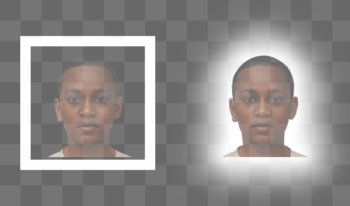
Ubiquitous throughout the history of photography, white borders on photo prints and vintage Polaroids remain useful as new technologies including augmented reality emerge for general use. In contemporary optical see-through augmented reality (OST-AR) displays, physical transparency limits the visibility of dark stimuli. However, recent research shows that simple image manipulations, white borders and outer glows, have a strong visual effect, making dark objects appear darker and more opaque. In this work, the practical value of known, inter-related effects including lightness induction, glare illusion, Cornsweet illusion, and simultaneous contrast are explored. The results show promising improvements to visibility and visual quality in future OST-AR interfaces.
Michael J. Murdoch, "From Polaroid to augmented reality: The enduring advantages of white borders" in Electronic Imaging, 2025, pp 195-1 - 195-6, https://doi.org/10.2352/EI.2025.37.11.HVEI-195
 Find this author on Google Scholar
Find this author on Google Scholar Find this author on PubMed
Find this author on PubMed